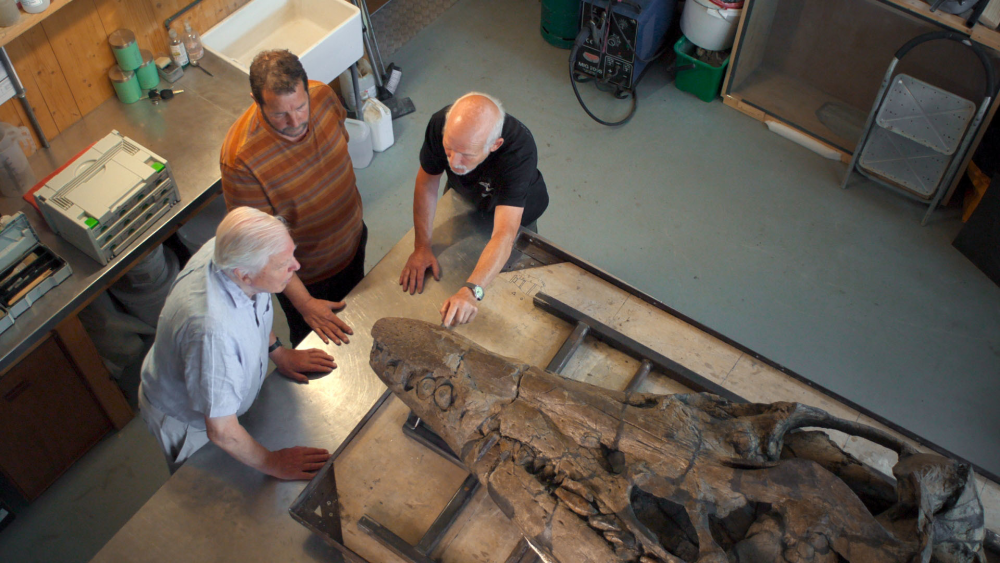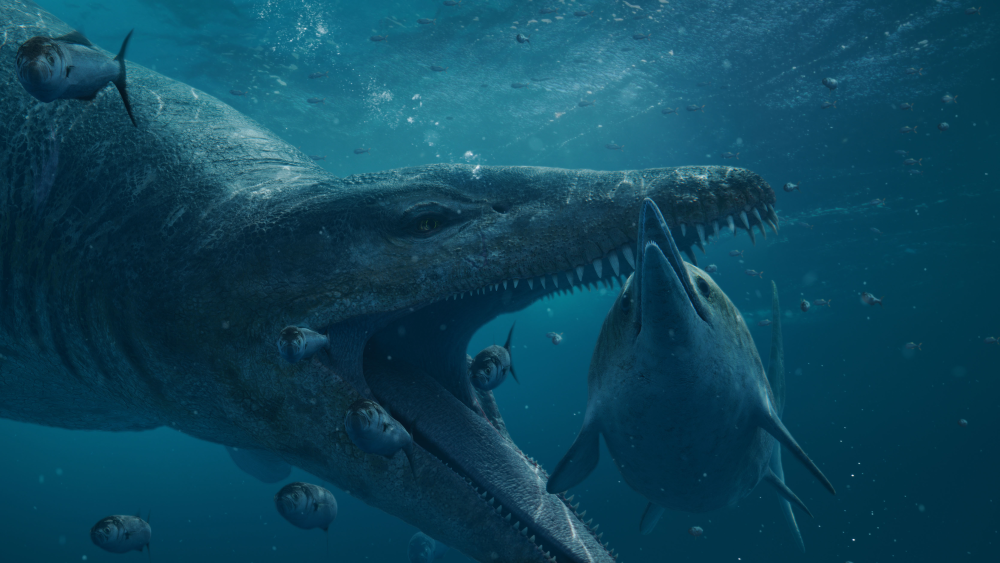A 150 million-year-old snout belonging to a predatory marine reptile was found by a fossil enthusiast while walking along the Jurassic Coast, UK. The chance discovery led to a retrieval mission of epic proportions as fossil experts scaled down a nearby cliff face in search of the rest of it. It wasn’t easy, but it paid off, and the resulting monstrous skull – believed to belong to a new-to-science species – is the star of a new documentary from the BBC called Attenborough and the Giant Sea Monster. IFLScience went to meet the prehistoric monster and the people who discovered it.
The Jurassic Coast is a famously productive site for fossil discoveries, helped along by a combination of erosion and stormy weather that means the remains of extinct animals are regularly being churned up along the shoreline. Anyone can visit the beaches in search of common finds like ammonites, but finding the skull of an enormous predatory sea monster halfway up a cliff? Well, that’s not something you see every day.
After the snout was found rolling around on the stones, the mission began to work out if, and where, the rest of the giant sea monster was hiding.
“We put a drone up, then scanned all the way along the cliff and found what looked to be the rest of it sticking out of the cliff, but we needed to confirm that and that meant a trip down the cliff on ropes to actually go down and see it,” fossil expert Steve Etches MBE told IFLScience as we stand next to the massive skull in his workshop. He is the proprietor of the Etches Collection Museum in Kimmeridge, Dorset on England’s famous Jurassic Coast, where the pliosaur skull will eventually go on show to the public early next year.

Sir David Attenborough, Christopher Moore, and Steve Etches observing the fossil at the Etches Collection in Dorset.
Image credit: BBC Studios
Pliosaurs were one of the largest marine predators ever to swim in Earth’s oceans. With the biggest species at around 12 meters (39 feet) long, there wasn’t much that was off the menu, and they would use their enormous teeth to snatch prey like ichthyosaurs and chomp them into pieces.
Etches was joined by friend and fellow fossil expert Christopher Moore on the trip down the Dorset cliff face, accounts of which range from it being a lot of fun, according to Etches, and incredibly exhausting, according to Moore. Given the pair estimated getting the skull out of the cliff required the equivalent of two weeks’ worth of chipping into the surrounding mudstones, we think we’d sit in the latter camp.
We were invited to visit the Etches Collection and speak to Etches and Moore – both of whom have discovered impressive fossils and new species of marine reptiles along the Jurasic Coast – about their experience getting the rest of the pliosaur skull out of the cliff, and what evidence there is to suggest that it’s a new-to-science species.
In Attenborough and the Giant Sea Monster, Sir David Attenborough investigates how Etches and Moore were able to retrieve the fossil from 12 meters up in the cliff face. To help unravel the skull’s mysteries, he speaks with an international team of scientists to find out what the skull can tell us about how the pliosaur behaved in life, including what strategies this predator used in the hunt.

What the pliosaur may have looked like in life while hunting ichthyosaurs.
Image credit: BBC Studios
You can expect cutting-edge visual effects to bring the sea monster to life, fascinating scanning technologies that enabled scientists to peer inside the fossil, and why scientists now believe this could be a completely new species.
Don’t miss Attenborough and the Giant Sea Monster at 8 pm GMT on New Year’s Day on BBC One in the UK and iPlayer.
Source Link: Exclusive: Giant Skull Of 150-Million-Year-Old "Sea Monster" Emerges From UK Cliffs